
How 2 BlueBike: Who Uses Those Anyway?
Which BlueBike stations are most likely to have available bikes? What times of day have the worst BlueBike traffic? How long does the average biker ride?
Picture this. You’re an incoming freshman and are new to campus. You’re excited to explore everything that’s available to you. Your only problem is the costly time taken up by transportation. Through the grapevine, you hear of a revelatory service to solve your problems: …BlueBikes…
BlueBikes– What are those? You hear yourself asking.
Fret not! We have the answer.
Methodology
The data we used for this analysis is readily available on the BlueBikes website, which provides data on rides throughout the whole of Boston for the past decade.
Given the sheer volume of BlueBike rides each month, we found it sufficient to analyze data from September 2022, which would be most reflective of the Harvard student population since everyone’s just arrived on campus to get into the swing of Fall term. Additionally, to narrow down our sample size for added relevance to Harvard, we filtered the starting and ending locations of each ride for BlueBike stations located in and around our campus. Specifically, we examined the following stations: Graham and Parks, Quad, Law School, SEAS Cruft, Gund Hall, Verizon Innovation, Cambridge Main Library, Harvard Housing, Dewolfe, HS Mass Ave, HS Brattle, HKS.
Where can I get a BlueBike?
Starting points
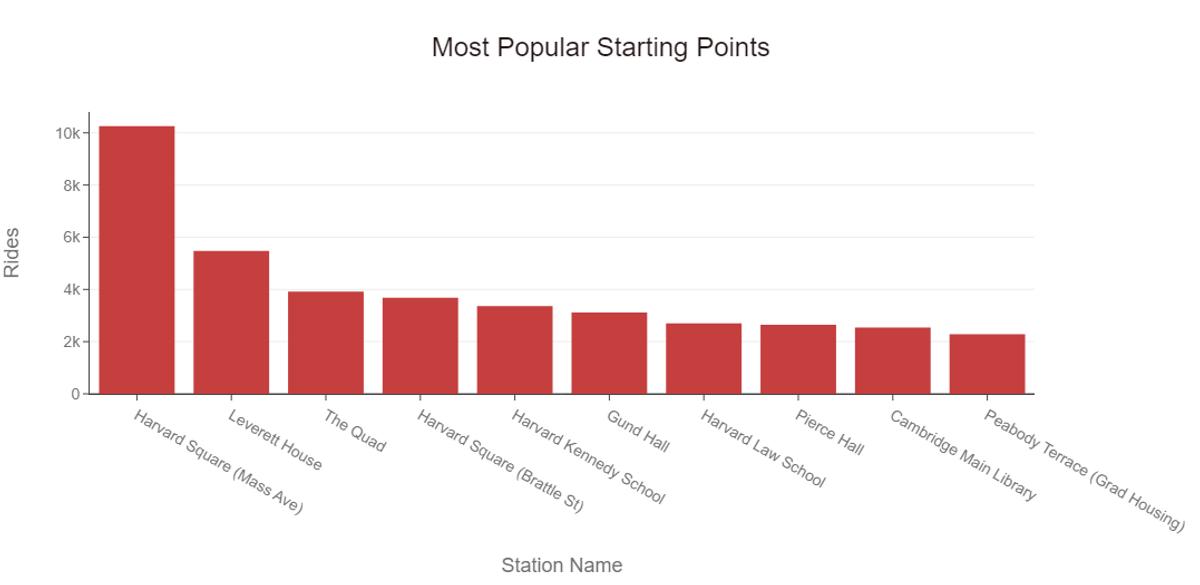
To begin, we organized our BlueBikes data by the most popular starting points surrounding the Harvard campus.
Rather unsurprisingly, the most popular starting point – with almost twice the number of rides per month as the next most popular location – is the station at Harvard Square along Mass Ave, servicing the entire first-year population as well as anyone who finds themselves at the Smith Center.
The second and third most popular locations similarly reflected the next most densely populated locations by undergraduates: the station at Leverett, servicing the River Houses, and the Quad.
The rest of the locations on this list are mostly occupied by locations specific to Harvard’s graduate schools - like the Kennedy School, Law School, and Gund Hall (that’s the really ugly brutalist building that belongs, ironically, to the Graduate School of Design).
Ending points
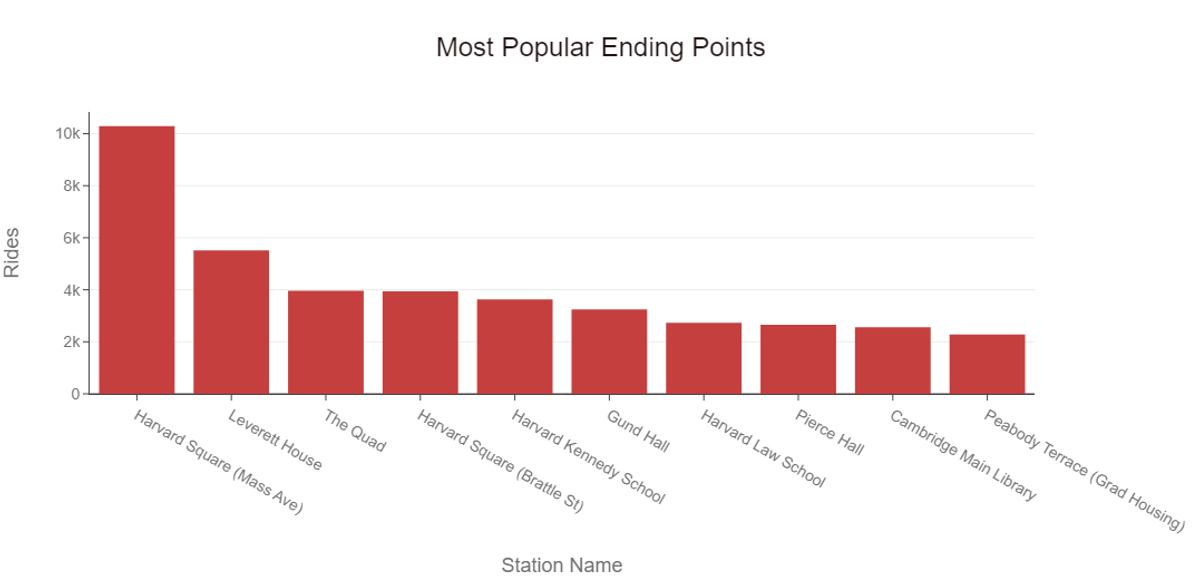
We thought we could be smart by plotting the most popular ending points as well, so you’d know where to go if you need a BlueBike particularly urgently. As it turns out, this chart is almost identical to the most popular starting points, which makes sense in hindsight because the most populous residencies and academic buildings would have as many people traveling towards them as they would people traveling from them.
To really optimize your BlueBike travel schedule, then, you’d need to consider the most popular riding hours as well, other than just locations. Read on to find out what we discovered!
What do people do with their BlueBikes?
Riding hours
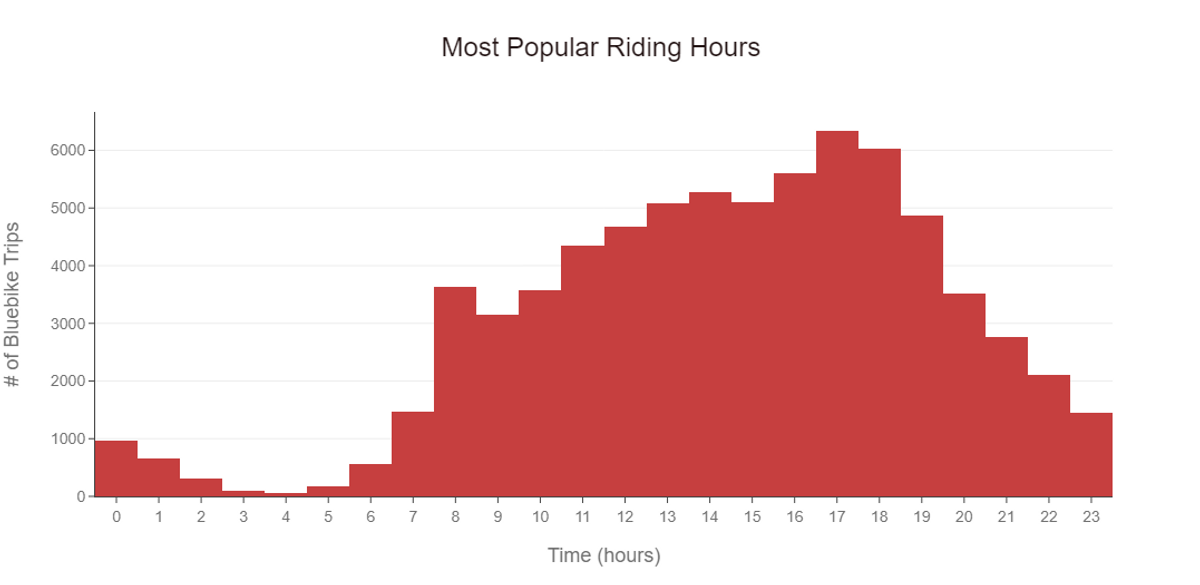
We found that the most popular hour for BlueBike rides was 5 pm and the most popular commuting times were 11 am - 7 pm with a peak between the hours of 4 pm - 6 pm.
Our data makes sense as the most popular hour for BlueBike rides (5 pm) is when most people get off of work or their classes. These times correlate with commuting hours and traffic congestion within the community which provides an insight to the BlueBikes potential in reducing the amount of traffic in the streets and providing an alternative to other travel options.
To optimize your schedule by ensuring that you receive a BlueBike in time, try to commute during the off hours from 9 pm - 7 am.
Riding durations
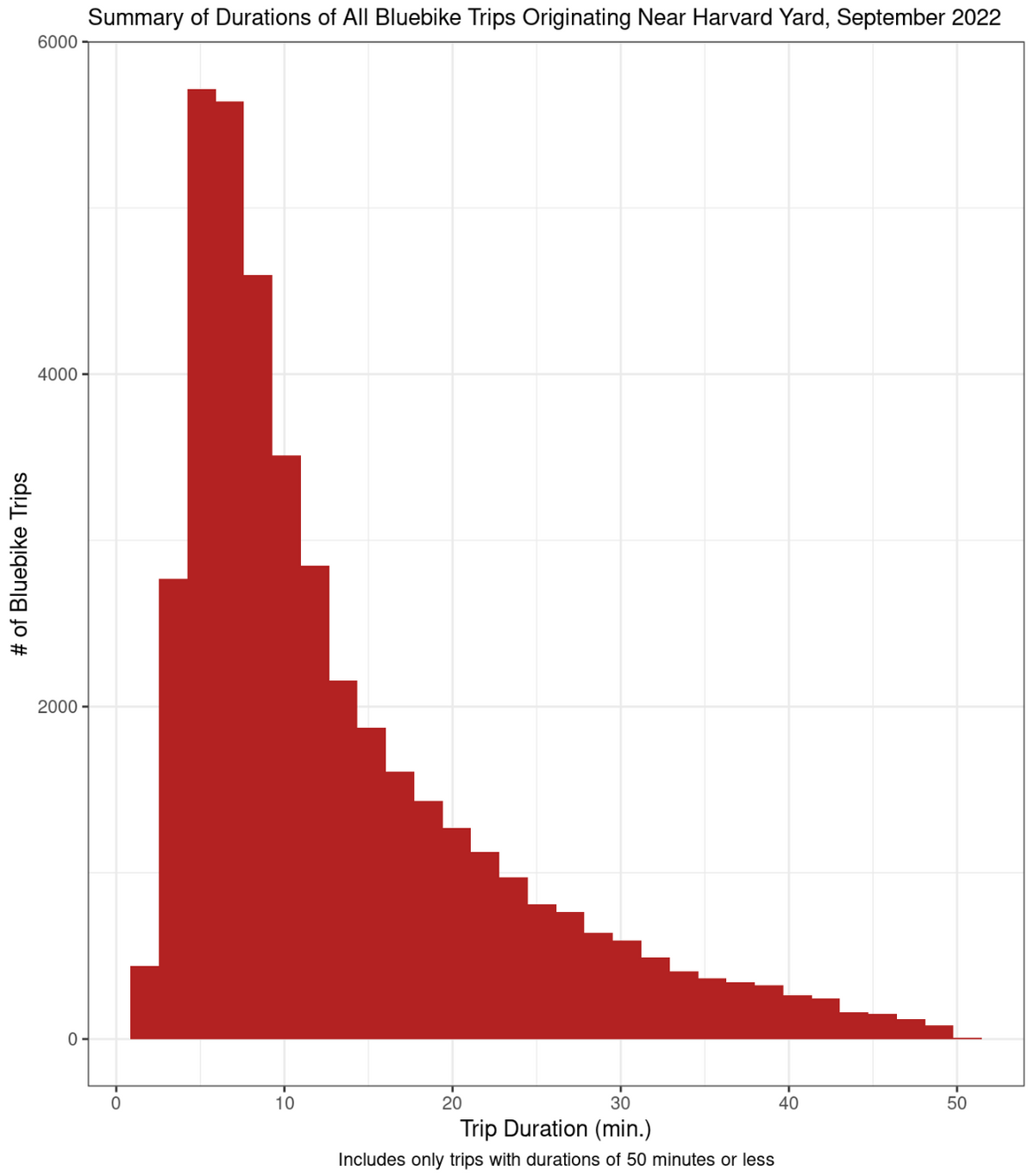
We then organized our data by the length of time that trips took. We restricted ourselves to trips starting at stations near Harvard1, and to trips under 50 minutes in length, which constituted nearly all trips, and removed sparsely scattered outliers– likely glitches in the BlueBikes database.
Our results reflect that most students prefer short, five to ten minute trips. From there, trip duration seems to be subject to steep exponential decay. Trips longer than half an hour are rare. This makes sense, considering that the cost of a trip scales with time, but it also suggests that most trips taken by students are likely purposeful and work-related, rather than for leisure.
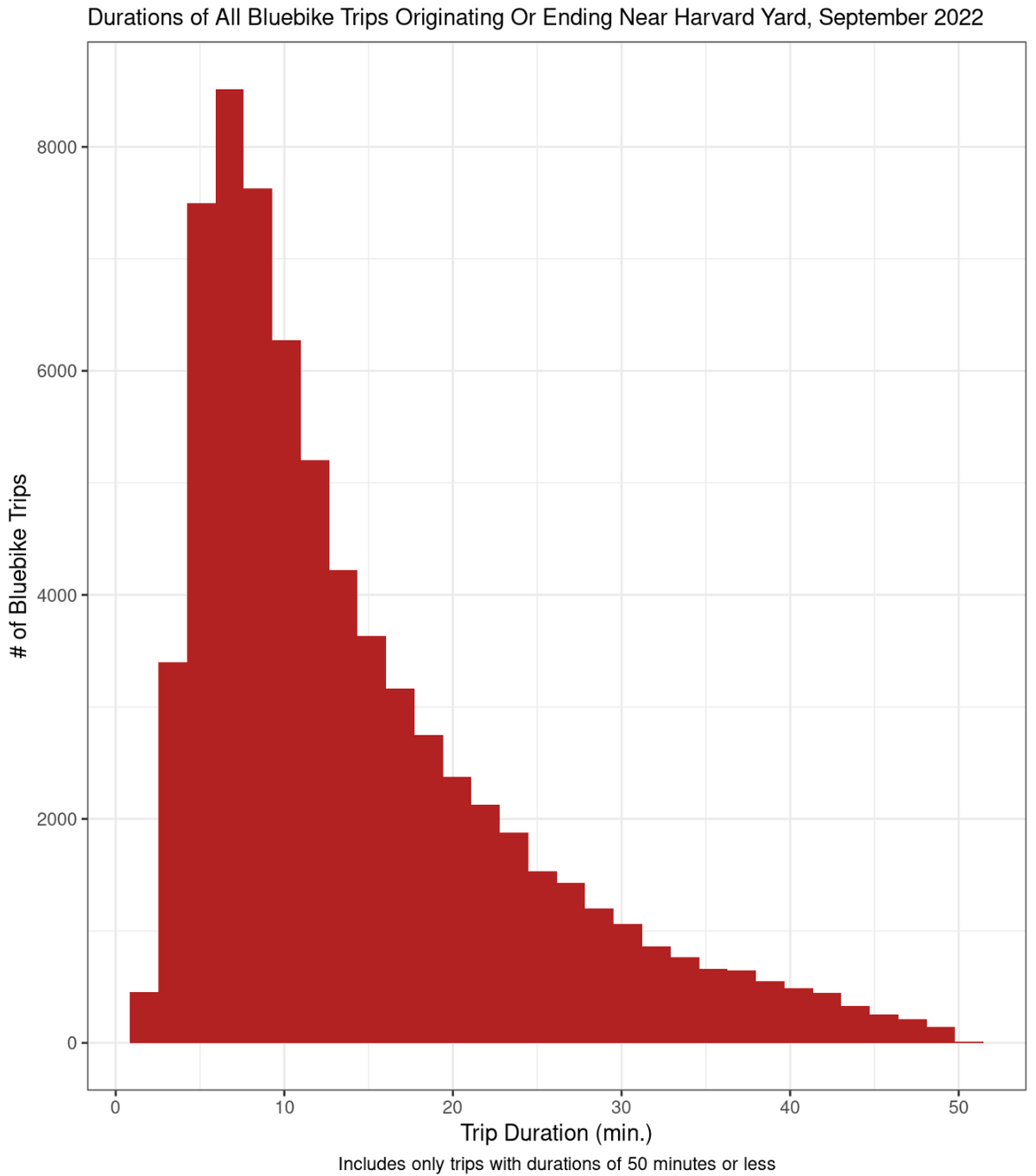
Interestingly, but perhaps unsurprisingly, the same holds for BlueBike trips ending and starting near Harvard Yard. Again, most commonly, trips take between 5 and 10 minutes. Though now trips longer than 25 minutes are slightly more frequent, and more trips are considered in our chart.
Limitations
One limiting factor that we experienced was the number of variables available to us from the data on the BlueBikes website. These variables included trip duration, start time, stop time, start station, end station, and user type. This limited the scope of our research by restricting us to focus on only these variables. We could not examine other aspects of BlueBike use, such as the number of BlueBike users that are college students or the potential reasons to use BlueBikes over other transportation options.
Another limitation in our investigation is we only analyzed the BlueBike data collected during September 2022. If we had no concerns about computer storage and more time, we could've done a more holistic analysis that spanned multiple months/years of BlueBike data.
Conclusion: Looking forward
Our results extrapolate the data from BlueBike trips at stations close to Harvard to the behavior of Harvard students. We find most trips taken by Harvard students are relatively short, the most popular hours for BlueBike use are from 4 pm to 6 pm, and students generally mount and dismount their bikes near Mass Ave. More research and data manipulation is needed to perhaps find more surprising results. In the future, it may be interesting to compare seasonal trends or to compare trends between BlueBike subscribers and normal users, for example. The data we have, however, does provide information for students new to campus and achieves the goal we had: creating an overcomplicated analysis of a simple premise: How 2 BlueBike?!
